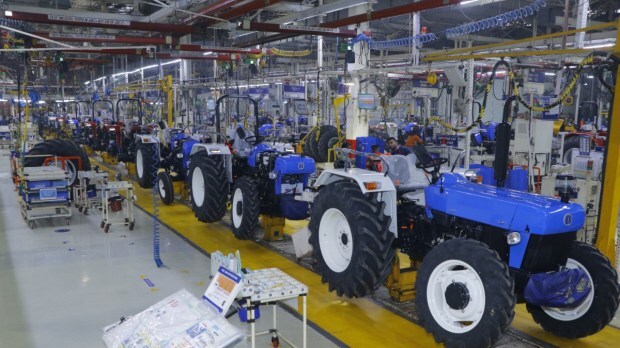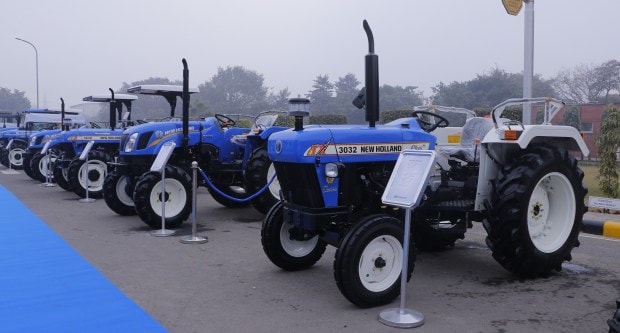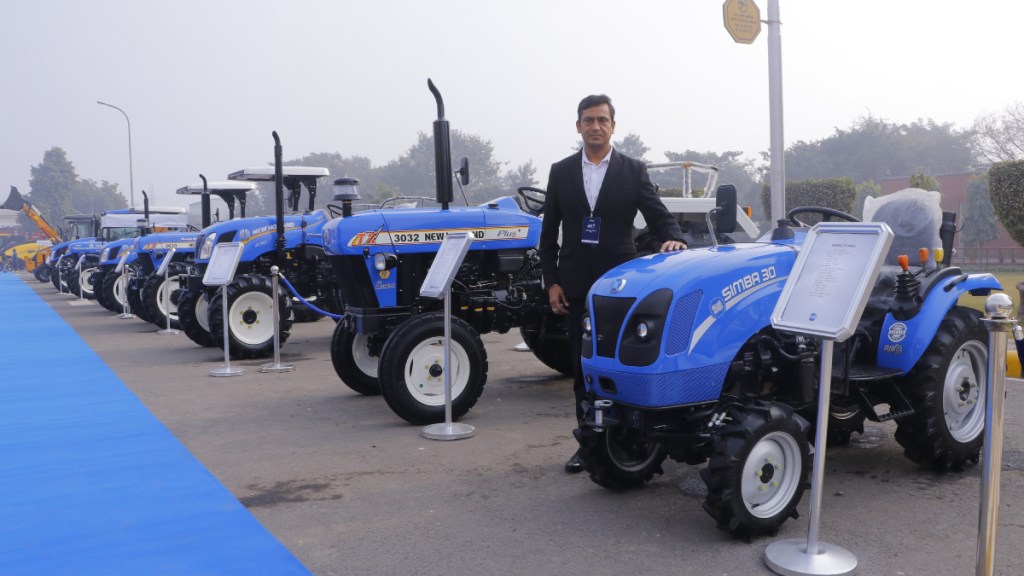New Holland Agriculture, part of the CNH Industrial Group, sees a huge potential for growth in India for its tractor and agri-equipment business over the course of the next few years. The company is building up capacity as well as new products and technologies to meet the needs of the Indian market.
The CNH Group has invested over $250 million (around Rs 2,082 crore) in the last 10-15 years across its plants in India. In 2023, the company reported revenue of around $1 billion (Rs 8,331 crore) from India operations across legal entities, of which 71 percent came from the agriculture segment, construction equipment contributed 26 percent, and the remaining 3 percent came from financial services. The company is said to have a profitable business in India.
In India, the company started its journey way back in 1998 and celebrated its 25-year milestone this year. As part of its celebration, it showcased its range of farm equipment at its Greater Noida manufacturing plant, including tractors, combine harvesters, and balers. CNH also presented its local R&D capability by demonstrating precision technology, including telematics and software apps, developed and integrated across product segments by the India Technology Center.
In an interaction with Financial Express Online, Narinder Mittal, Country Manager & Managing Director of CNH India & SAARC, shares his views on the potential of the Indian market and the company’s plans for the tractor and agriculture equipment segment.
India is the world’s largest tractor market, witnessing sales of almost 900,000 units last year, and expect to see a flat growth this year, albeit a high-year ago base.
“But next year (FY2025) the growth while dependent on various factors such as the monsoon, and government policies, as long as everything stays positive, we expect it should grow by 4-5%. We see the million-unit mark being breached by FY2025-26,” shares Mittal.
India market
But while the country boasts of record tractor sales, the demand in contrast to the higher HP segment globally, the demand in India has been on the lower side of power.

“We came to India with the 75HP tractor and in 1998 we realised that it was not suitable for most customers. The 40-50HP tractor segment in India accounts for almost 50-55 percent of tractor sales in India, 29 percent of the industry is between 30-40HP, and then 10 percent is up to 30HP and the balance is above 50HP. This is how the industry is spread across. That’s why globally, you don’t see such a high number of tractors being sold because a tractor could cost around Rs 1 crore to Rs 2 crore there, the farm holding is also large, we sell tractors of up to 400-450HP combined with big harvesters and other equipment. The agricultural harvesters that we sell in India, cannot be used globally it is a very small piece of equipment that can only be used in India. Interestingly, in most international markets for us, our tractor range starts at 100HP and then there are compact tractors that we intend to manufacture for the United States from India by next year, but that comes in a different specialty segment ‘Compact’.”
As part of its near-to-mid-term plan, the company is investing up to $70-75 million (Rs 583 crore to Rs 625 crore) in agriculture and that too only in physical footprint in next 2 years.
He says there are 2 types of investments – program investment, wherein you invest towards certain product development, and then to industrialise the product there is an investment in tooling and machinery among others.
“We have also invested hugely in India Technology Centre in India, and have more than 700 engineers working not just for the Indian products but also global products. We aim to scale that to 1,000 engineers by 2025 and 2,000 engineers subsequently. We are investing in virtual reality labs, global simulators, especially in electronic and precision parts for the global products,” says Mittal.
New technology and market share
CNH Industrial has produced more than 675,000 tractors from its Noida for India and global markets. In terms of sales, the company sold 35,500 tractors in India in CY2023, up 2 percent in a relatively lull market.

Mittal attributes the uneven growth in certain segments last year on the back of non-uniform monsoon coverage in several parts of the country and some levels of reduction in financing in the southern market.
But he maintains an optimistic overall view of the market. “The industry grew by 1.5-2% last year versus 2022, this year too we expect the volumes should be over 900,000 units, the outlook is positive, it might not go down significantly, but there will be flat growth because of the high-year base.”
“But next year (FY2025) the growth while dependent on various factors such as the monsoon, and government policies, as long as everything stays positive, we expect it should grow by 4-5%. We see the million tractor sales unit mark being breached by FY2025-26,” he adds.
Electric and autonomous tech
The advent of fully autonomous vehicles globally may be a few decades away, but the technology in certain levels and segments will see mixed adoption. Similarly, electrification and alternate fuels are also being explored in the automotive and tractor industry.
“Globally, we feel electrification in tractors will start in the lower HP segment (upto 40HP), and gradually by 2035, nearly 30% in lower HP segment will shift to electric. If it happens globally, it will happen in India.”
Similarly, CNH Industrial is already started working on Level 3 autonomous solutions for customers globally and interested piloting it with a few customers in India too.
“We see the demand for autonomous solutions in tractors in India to start from the sugarcane segment, it is a high-end product.”
“We will make sure that these technologies are priced in such a competitive manner that the customers see value in buying it. For instance, the machine (sugarcane harvester) costs around Rs 80 lakh and the solution (auto guidance) we are working on should be closer to Rs 2.5-3 lakh. If you go to the Western world and bring in the solution from there, the cost will be significantly high, in our case what we are developing in India is comparatively low-cost and will be a small percentage of the new machine. That’s what the customer will be able to pay,” he concludes.



















